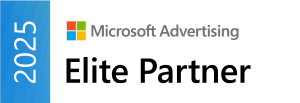Stage 1: The Low-Intent Capture
Campaign 1: Low Intent – High Priority – Low CPC
The first stage of our strategy is all about capturing generic and irrelevant searches that might still bring in potential customers. These are users who are at the top of the funnel, just starting to explore their options. Here’s how it works:
Capture the Generic Searches:
In Campaign 1, you’ll create a low intent campaign designed to capture broad search queries. Think of it as your safety net to catch potential customers who might not yet know what they want.
Low CPC Bids: Since these are generic searches, it’s essential to set your CPC bids relatively low. You don’t want to burn through your budget on these clicks because they might not convert right away.
Budget Management: Allocate a smaller budget to Campaign 1 to ensure it doesn’t consume your overall budget.
Strategic Exclusions: Exclude specific search queries like brands, product types, item numbers, and other standard exclusions that don’t align with your goals.
Stage 2: The Mid-Intent Engagement
Campaign 2: Medium Intent – Medium Priority – Medium CPC
In the second stage, we move deeper into the funnel. Users in Campaign 2 have a clearer idea of what they’re looking for, and their intent is stronger. Here’s how to make this work:
Deeper Funnel Searches: This campaign captures more specific lower-funnel searches. For example, someone searching for a specific brand and product category has a more focused buying intent.
Moderate CPC Bids: Increase your CPC bids to align with the higher intent of these users. Since they are closer to making a purchase, it’s worth investing more.
Budget Adjustment: Allocate a moderate budget to Campaign 2. These clicks are more likely to convert, so it’s a worthwhile investment.
Exclusion List: Tailor your exclusions to exclude certain product types, item numbers, and other standard exclusions that are not relevant to your campaign goals.
Stage 3: The High-Intent Conversion
Campaign 3: High Intent – Low Priority – High CPC
The final stage is all about capitalizing on strong buying intent. Users in Campaign 3 are ready to make a purchase, and you want to ensure your campaigns are optimized for conversions. Here’s how to do it:
Strong Buying Intent: Campaign 3 is triggered by users with high buying intent. These are individuals actively searching for a product to purchase.
High CPC Bids: Set your CPC bids at their highest in this campaign. The goal is to outbid your competitors and secure clicks from these motivated buyers.
Budget Allocation: Allocate a significant portion of your budget to Campaign 3. This is where the most likely conversions will happen.
Minimal Exclusions: Unlike the previous stages, you can keep the exclusions to a minimum in this campaign. You want to capture as much high-intent traffic as possible.
Control and Conversion
By following this three-stage strategy, you retain a tremendous amount of control over your Google Shopping campaigns. It allows you to fine-tune your budget and CPC bids based on user intent, maximizing your ROI. As you gather more conversion data, you can make informed decisions about transitioning to Performance Max campaigns, further enhancing your advertising efforts.
In a world of automated marketing, sometimes going „old school” can still provide exceptional results. This strategy keeps your marketing dollars focused and ensures you’re getting the most out of your Google Shopping campaigns. So, go ahead, try it out, and watch your ROI soar!





